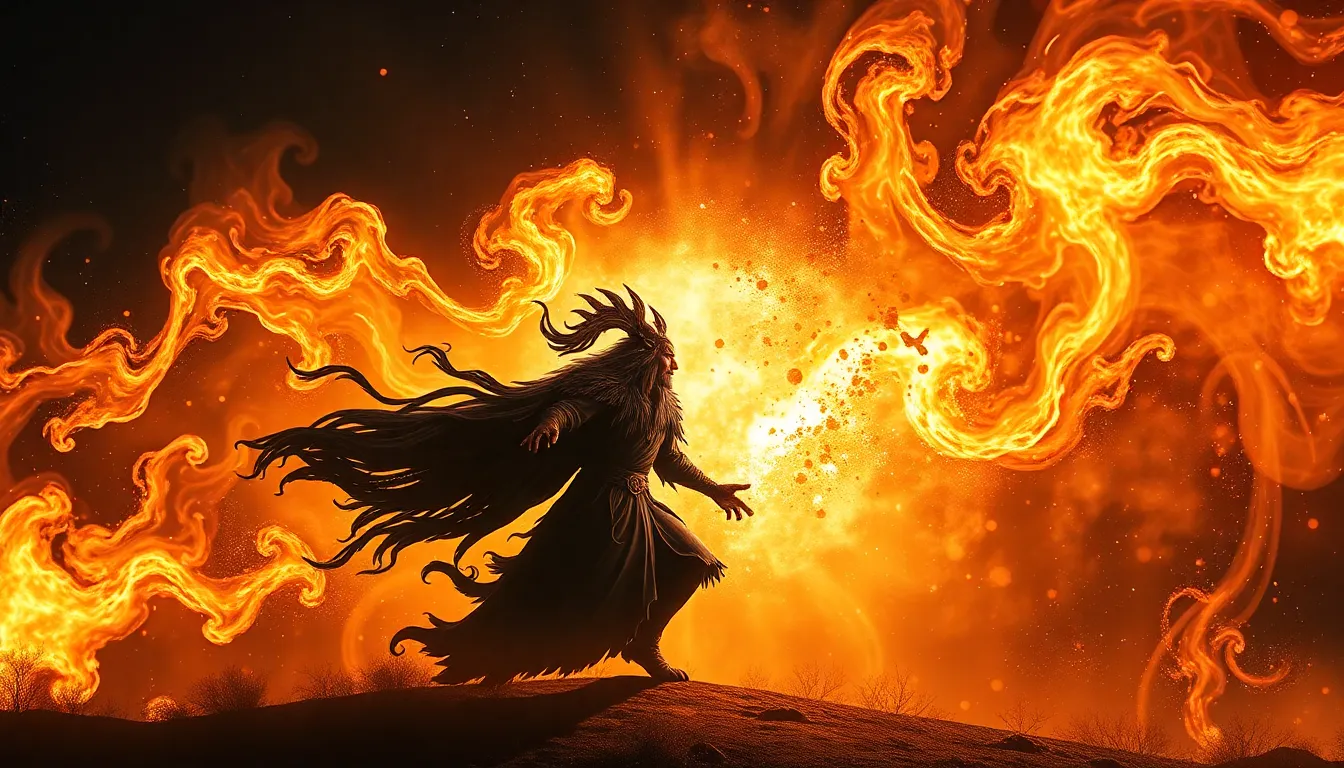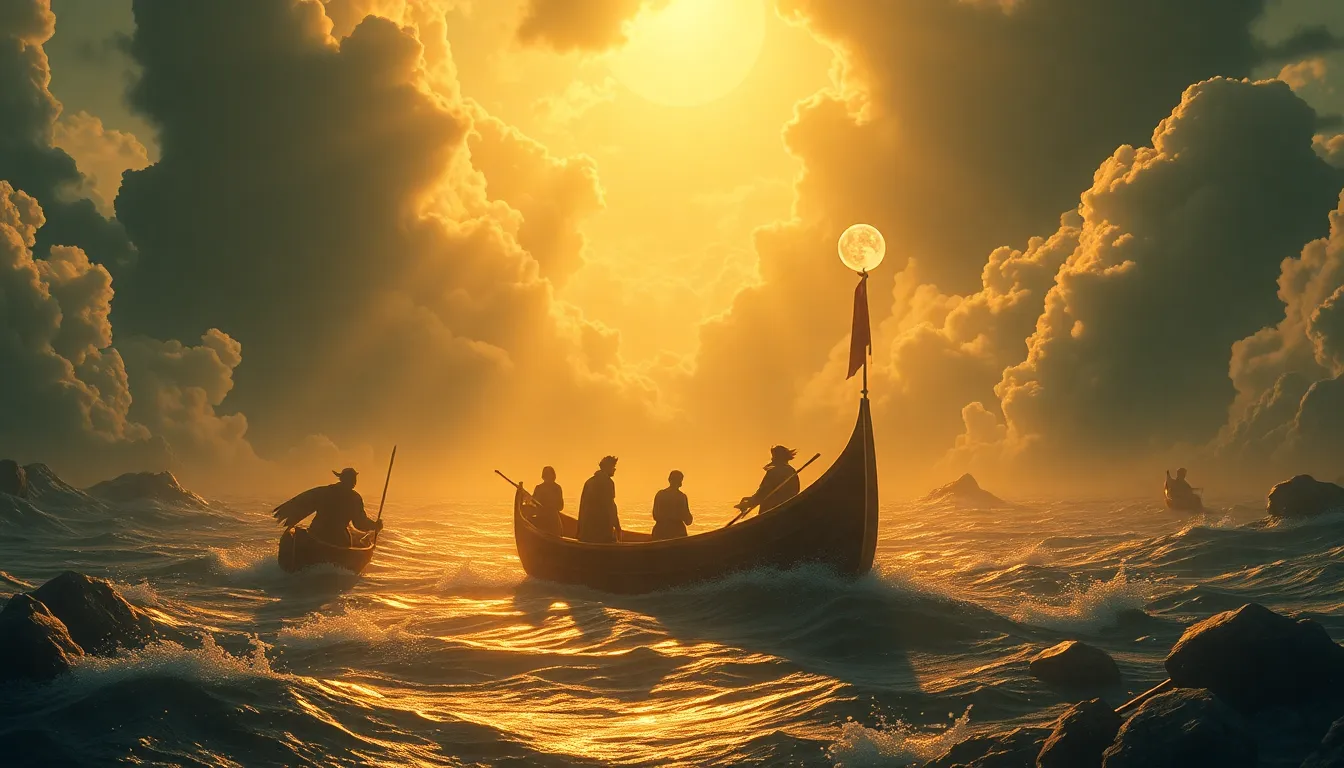The Baltic Gods and the Cycle of Life
Baltic mythology, the ancient belief system of the Baltic people, is rich with stories about gods, goddesses, and mythical creatures. One of the central themes in Baltic mythology is the concept of sacrifice and renewal, which is deeply intertwined with the cyclical nature of life and death. The Baltic people believed that the world was a living, breathing entity, constantly undergoing cycles of growth, decay, and rebirth. This belief shaped their religious practices and their understanding of the divine.
The Role of Sacrifice in Baltic Mythology
In Baltic mythology, sacrifice played a crucial role in maintaining the balance of the cosmos and ensuring the continuation of the life cycle. Sacrifices were offered to the gods in the hope of gaining their favor and protection, receiving blessings for good harvests and fertility, and averting misfortune. Sacrifices could take various forms, including offerings of food, animals, and even humans. The act of sacrifice was believed to appease the gods and ensure their continued favor.
Renewal Through Sacrifice: A Key Theme
The concept of renewal through sacrifice is a key theme in Baltic mythology. The Balts believed that by offering something precious—whether it be a valuable possession, an animal, or even a human life—they could appease the gods and bring about renewal in the world. This renewal could take many forms, including the return of life after winter, the growth of crops, and the continuation of the human race.
The Myth of the World Tree: A Symbol of Cosmic Renewal
The myth of the World Tree, a giant oak tree that connects the heavens, the earth, and the underworld, is a powerful symbol of renewal in Baltic mythology. The World Tree represents the interconnectedness of all things and serves as a conduit between the mortal and the divine realms. The tree’s cyclical growth and decay reflect the natural cycles of life and death, and its ability to endure represents the enduring power of nature.
The God of Thunder, Perkūnas: A Figure of Sacrifice and Renewal
Perkūnas, the god of thunder, lightning, and storms, is a central figure in Baltic mythology and represents the power of nature to both destroy and renew. Perkūnas is associated with the spring rains that bring life to the earth, but his wrath can also bring destruction and death. Perkūnas is seen as a force of both destruction and renewal, reflecting the cyclical nature of life and death.
The Role of Sacrifice in the Baltic Seasonal Rites
The Baltic people held a deep connection with the natural world, and their lives were intricately interwoven with the rhythms of the seasons. These rhythms were marked by various festivals and rituals, with sacrifice playing a crucial part in these ceremonies. The most important seasonal festivals were associated with the cycles of planting and harvesting, with sacrifices offered to ensure a bountiful harvest and appease the gods who controlled the forces of nature.
The Baltic people understood that the cycle of life and death was essential for the continuation of the world. They believed that by offering a sacrifice, they could ensure the continuation of the growth cycle and bring about renewal even in the face of death and decay. For example, during the festival celebrating the end of the harvest, an animal sacrifice was usually made to honor the gods and ensure the continuation of fertility in the coming year. The act of sacrifice was a way to connect with the gods, offer gratitude for the harvest, and seek continued blessings for the future.
The Sacrifice of the God of the Earth: A Myth of Regeneration
One of the most profound myths in Baltic mythology tells the story of the sacrifice of the god of the earth. According to this myth, the god of the earth, who was responsible for the growth of plants and the fertility of the land, was sacrificed to renew the life cycle. This sacrifice was believed to bring about a new era of growth and prosperity. The myth highlights the importance of sacrifice for the continuation of life and the renewal of the earth. The act of sacrificing the god of the earth symbolized the cyclical nature of life and death, and the need for a sacrifice to ensure the continuation of the life cycle.
Theories of the Relationship Between Sacrifice and Renewal
Scholars have offered different interpretations of the relationship between sacrifice and renewal in Baltic mythology. Some scholars suggest that the act of sacrifice was seen as a way to appease the gods and ensure their continued favor. Others argue that sacrifice was a symbolic act that mirrored the natural cycle of life and death, with the offering of a life signifying the need for the death of something old to give way to new life. The act of sacrifice was seen as a necessary part of the ongoing process of renewal, ensuring the continuation of the life cycle.
The Sacrifice of the Individual for the Collective Good
In Baltic mythology, the concept of sacrifice extends beyond the realm of the gods and encompasses the human realm as well. The idea of sacrificing one's own interests for the good of the community was a common theme in Baltic folklore and mythology. This idea highlights the importance of selflessness and the willingness to make sacrifices for the benefit of the community. This willingness to sacrifice oneself for the common good was seen as essential for the survival and well-being of the community.
The Importance of Understanding Baltic Mythology in its Historical Context
Understanding Baltic mythology requires a deep dive into its historical context. The Baltic people were primarily an agricultural society whose lives were intertwined with the natural world. Their mythology reflected their beliefs about the forces of nature and their understanding of the cycle of life and death. The concept of sacrifice was central to their beliefs, and their rituals and festivals were deeply rooted in this belief system. By understanding their mythology in its historical context, we can gain a deeper appreciation for the complex beliefs and values that shaped this ancient culture.
FAQ
Q: What was the purpose of sacrifice in Baltic mythology?
A: Sacrifice was a central element of Baltic mythology, serving multiple purposes:
- Appease the Gods: Offerings were made to ensure favor and protection from the gods.
- Ensure Fertility: Sacrifices were offered for a bountiful harvest and the continuation of the life cycle.
- Avert Misfortune: Sacrifices were a way to prevent misfortune or disease.
Q: What types of sacrifices were made in Baltic mythology?
A: Sacrifices could take many forms, including:
- Food Offerings: Fruits, grains, and other agricultural products were commonly offered to the gods.
- Animal Sacrifices: Animals, often the most valuable ones, were offered as sacrifices.
- Human Sacrifice: Though rare, human sacrifices were documented in some cases.
Q: Why was the concept of renewal so important in Baltic mythology?
A: The Baltic people believed in the cyclical nature of life and death, with a constant need for renewal. They saw sacrifice as a way to ensure the continuation of this cycle, bringing about new life and growth.
Q: How is the myth of the World Tree related to the concept of sacrifice and renewal?
A: The World Tree symbolized the interconnectedness of all things and represented the continuous cycle of life and death. The tree's growth and decay embodied this cycle, its resilience representing the power of renewal.
Q: What is the significance of Perkūnas, the god of thunder, in Baltic mythology?
A: Perkūnas was a powerful figure representing the forces of nature, capable of both destruction and renewal. He embodied the cyclical nature of life and death, with his storms symbolizing the destructive forces that could also bring about renewal.



